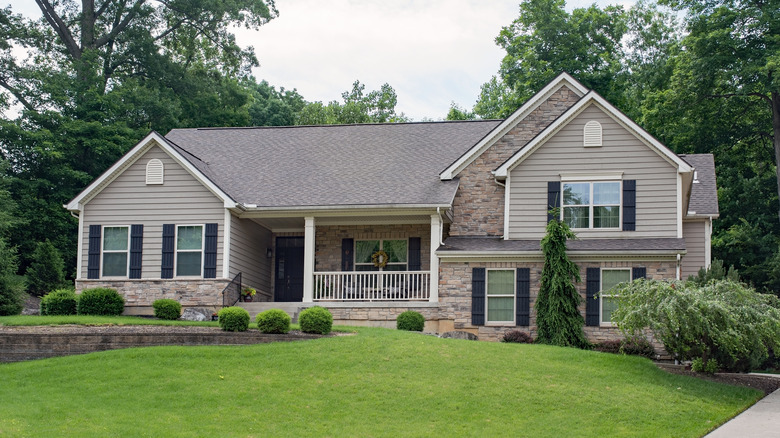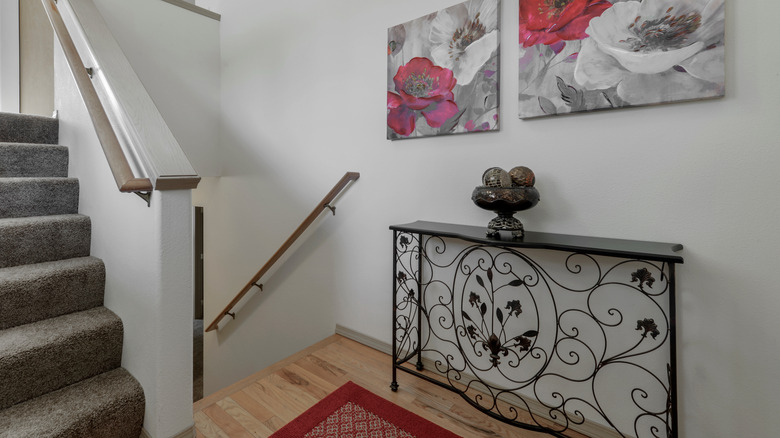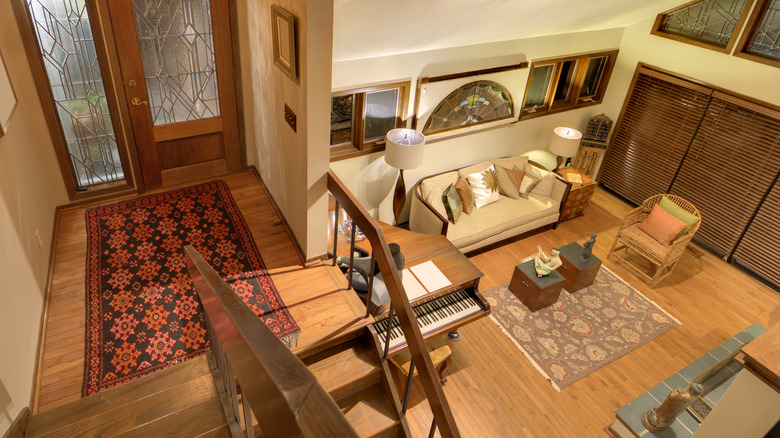Split-Level Floor Plans: The Pros And Cons You Should Know Before Buying A Home
Have you ever heard a realtor use the term "split-level home" and you weren't sure exactly what they were talking about? Not to be confused with popular ranch-style homes, split-level floor plans are another option you may encounter. Instead of having only one floor or traditional different levels divided by normal, full-length staircases, split-level floor plans feature a few levels separated by mini-staircases. Of course, split-level homes have both their benefits and disadvantages that will determine whether the floor plan is a right fit for you. A split-level home can save you money and help you make the most of all the space by designating different sections for different uses. However, some potential buyers may find the layout and entrance off-putting when it's time to sell in the future — and changing that layout isn't very easy.
This somewhat non-traditional layout was introduced in the '50s and continued to be popular through the '60s and '70s, eventually losing its appeal in the '80s — but, of course, these houses still exist. Also, not all split-level homes look the same. For instance, while you can see the split levels from the front of the home in a "side split" layout, you can't see the different levels from the front with a "back split" type. Further, "stacked split" home designs often have more than three stories. All those split-level home options could appeal to people who like houses with distinctly separated sections, but they may not be as alluring for others.
Benefits of split-level floor plans include distinguished spaces and lower prices
If you want to avoid an open floor plan because you don't like such a lack of separation between spaces, you'll likely appreciate the split-level design. Since the split-level floor plan typically provides more stories than a more traditional home of the same size, you'll be able to designate each section of the space to any theme you want, whether you want to transform an area to an entertainment room or home office. A more open layout wouldn't allow you to distinguish these areas from the rest of the home as easily. Consequently, split-level homes also generally lead to more privacy, as there are more designated spaces separated by staircases.
Also, split-level houses tend to be less expensive than homes with other floor plans. "In many communities with million-dollar homes, a split-level may be purchased for $600,000 to $750,000," Kerry Sherin, a consumer advocate for a home valuation company, told Bankrate in 2022. So, opting for a split-level floor plan could save you hundreds of thousands of dollars when buying a house. However, for each person who loves split-level homes, there's always going to be someone who hates the split-level floor plan for various reasons.
The downsides involve hard-to-change inconveniences
Split-level houses aren't typically considered too desirable, as a lot of people prefer more timeless or contemporary layouts. "Because many split-level homes are built in hilly areas, the lower portion of the house is often below grade... Consequently, the appraised value of these homes tend to be less than a home with the same livable square footage that is entirely above grade," Erik Wright, a real estate investor who owns a home-buying business, told HomeLight. Staircases are also critical aspects of all split-level homes, even though they're relatively small. So, you'll need to be on the stairs every day to get around your home, oftentimes even to get to your front door. This could be a problem for those with accessibility needs.
Another reason why split-level floor plans can seem off-putting is that the typical split-level house doesn't include the most open or attractive entrance. Guests will likely be instantly met with two sets of stairs, making for a not-so-appealing first impression. Moreover, such a specific structure would be extremely difficult and expensive to try to change. Because the layout is so unique, certain renovations aren't feasible, especially when on a budget. Before determining whether you're interested in homes with split-level floor plans, thoroughly think over whether they'd be the right fit for your specific needs.


